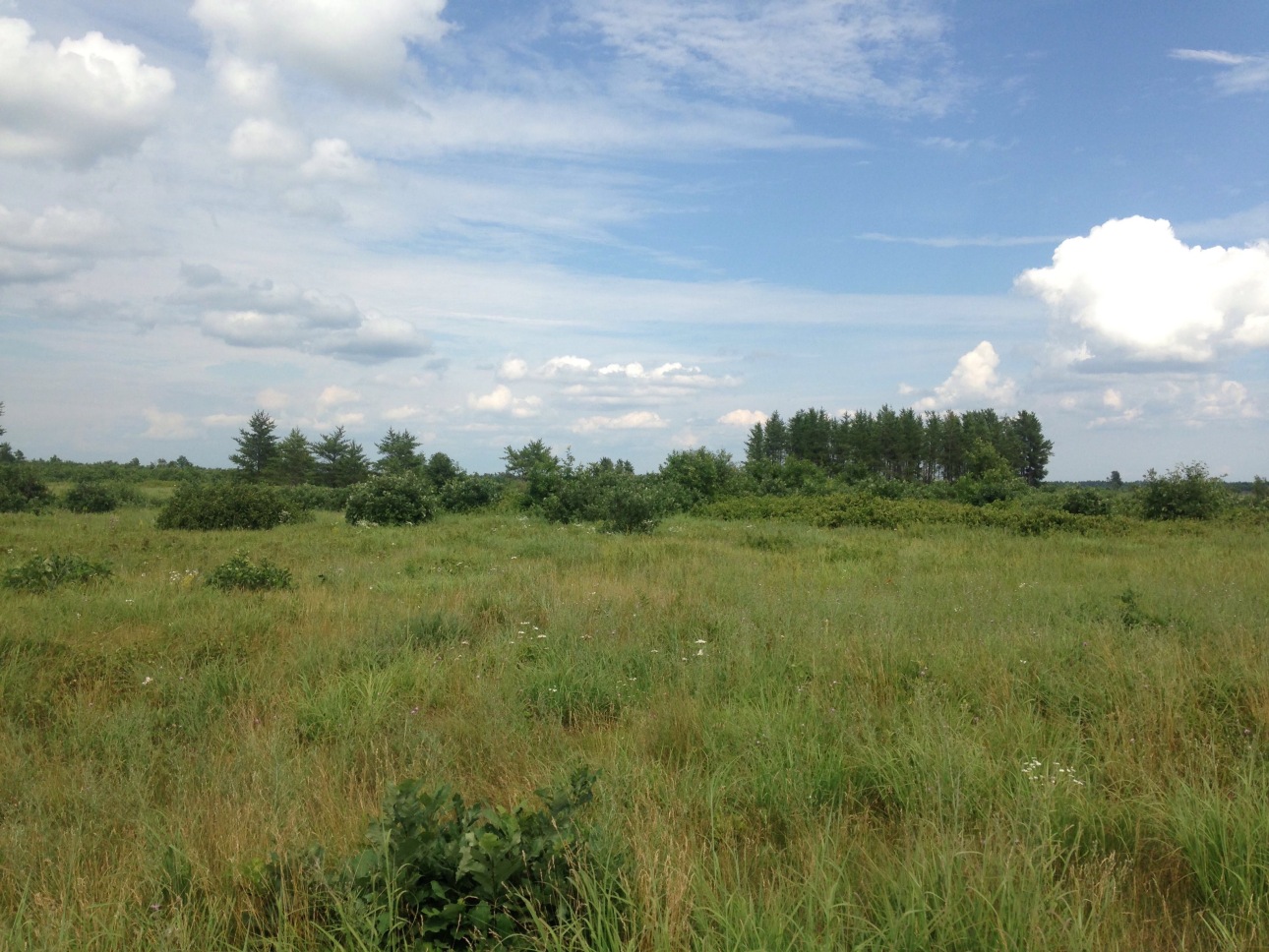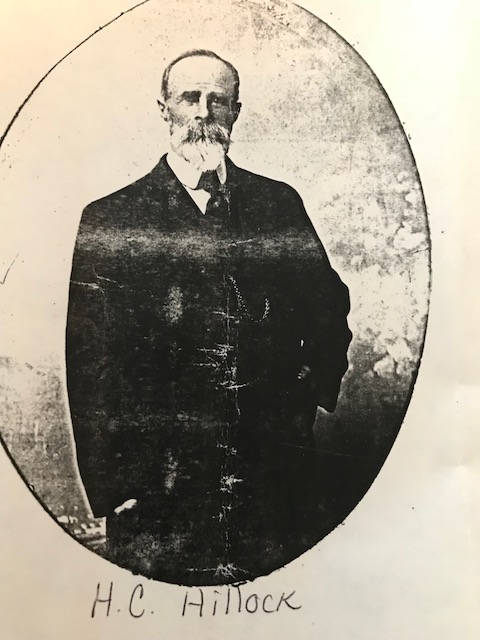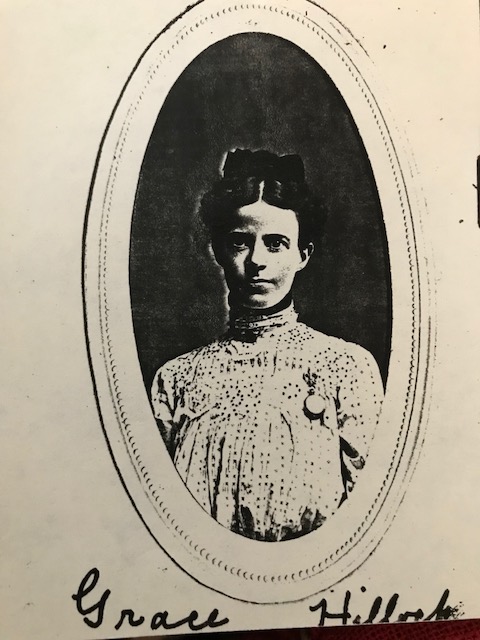Humans on the barrens: “Too dang cold” for the Hillocks
 (Once the homestead of Benjamin Hillock at the corner of Dry Landing Road and St. Croix Trail.)
(Once the homestead of Benjamin Hillock at the corner of Dry Landing Road and St. Croix Trail.)
Humphrey Hillock may never have seen the Namekagon Barrens.
Born 1836 in Michigan, he moved as a young man to Webster City, Iowa, just in time to join a militia formed in 1857 after the “Spirit Lake Massacre,” an Indian attack on frontier settlements during a severe winter. Over the years he was quite successful in Iowa, serving as a county commissioner and a sheriff, running a meat market and operating a farm in nearby Rose Grove.
Then at 65, in 1901, he made the first of several purchases on the barrens, agreeing to pay the Chicago, St. Paul, Minneapolis & Omaha Railway more than $4,000 for about 1,600 acres in four sections, most of it in the heart of what are now the sands of the Namekagon Barrens Wildlife Area. The area was some 300 miles north of his home, and the purchases were probably the largest land acquisition ever made in the area by a person.
The railroad, known as the “Omaha Road” and later bought by the Chicago & Northwestern, had been given more than 100,000 acres of Wisconsin north woods and barrens in 1882 as a federal incentive for building a railroad from the St. Croix River to Superior and to Bayfield.
It, in turn, sold the land to individuals, many of whom lived in Iowa near the railroad’s main route to Omaha.
It’s not clear why Hillock bought the land and there seems little evidence that he did anything with it before he died in Iowa in 1911. (His death was front-page news in the Webster City Freeman, which called him “one of the pioneer settlers of Hamilton County,” “a good man and an exemplary citizen.”) But the opening years of the 1900s represented a time the railroad and others were promoting the barrens as farmland. Settlers were beginning to homestead and buy land in the area. What the railroad didn’t own, the government was offering to farmers for sale or for homesteading. It’s possible Hillock rented his land out but census records indicate virtually everyone counted by the census enumerator in Blaine Township in 1910 was a land owner. If he bought the land as an investment, no records show he re-sold any to make a profit. Apparently, he donated three acres for the community’s Evergreen Cemetery just south of Five Mile Road in east Blaine Township.
At any rate, in 1912, his widow, Jennie, deeded the land over to their daughter, Grace Hillock.


Grace, too, seems not to have taken an active role with the land. She lived in Webster City, a teacher and a bookkeeper and a frequent subject in the social columns of the Webster City Freeman newspaper. At one point she left town to start a poultry business with her mother but soon returned. The newspaper noted various social gatherings she attended or hosted and travels she made, including a visit to her brother in Minong, Wis. (More on him shortly but the one brief mention is the only indication that Grace ever visited her land.) Then in 1917, she and her mother moved to Seattle, where another, much younger, brother Hugh Royden Hillock lived.
A grandson of his told me Grace lived with her brother toward the end of her life and worked with him in a Seattle deli. She died in Seattle in 1941 at age 68, without marrying or having children. Her great nephew told me had never heard of the Wisconsin land. In the meantime, that barrens land had gone back to the county for delinquent taxes in 1929. It thus shared the fate of much barrens land at the time and ultimately became a sizable fraction of what is now the state-owned wildlife area, home to sharp-tailed grouse, deer, bluebirds and blueberries.
But that’s only half of the Hillock story on the barrens.
Humphrey Hillock had another son, Benjamin, older than Hugh and younger than his sister Grace. And he actually did try farming the barrens. Like his father, Benjamin bought land from the railroad and he also homesteaded 160 acres. His land lay on either side of what is now Dry Landing Road at its intersection with St. Croix Trail.
On Dec. 20, 1904, Benjamin Hillock married Ruby Sarah Gage, who had apparently arrived in the neighborhood with her parents, Joseph and Sarah Gage, from Walworth, Wis., near Milwaukee. She, too, bought land nearby.
They started a family. It was in 1915 that the Webster City newspaper mentioned sister Grace coming for a visit. But like so many of their neighbors, the Hillocks didn’t stay. By 1917, less than 15 years after arriving, they were in Missouri, having sold their land to a man named James Peter, also a Missourian.
Virgil Hillock, a grandson of the couple, told me he was familiar with the family tale, partly because Benjamin had lived with Virgil’s family before he died in 1953. Virgil, now 77 and living in Broken Arrow, Okla., said he knew Benjamin had gone north from Iowa as a young man to farm but then left because “he said it was too dang cold.” Poor fertility in the sands would have been a likely contributing reason.
The family lived in Missouri for a while, and then Benjamin obtained land in Arkansas and built a house. He went back to Missouri to retrieve his family and to drive 30 head of cattle to Arkansas. After traveling six months he found unwelcoming neighbors had burned his house down, Virgil said.
Virgil’s father was Charles Otto Hillock, born on the barrens. “He was a tough man,” Virgil said. I asked him how he got that way and he said, “If you drove 30 head of cattle for six months as a 12-year-old, you’d be tough, too.”
Virgil’s grandmother Ruby died of pneumonia before he was born, but he said she was an accomplished teacher who could speak four languages – French, German, Spanish and English.
By 1930, the family was established farther south and west near Clovis, New Mexico. A great grandson is the mayor of Little Elm, Texas.
Today, Benjamin and Ruby Hillock’s barrens land is divided. Some lies on Burnett County land and is forested, but the 160 acres Benjamin homesteaded is open country, filled this time of year with bergamot and other flowers, scrub oak and grass, part of the state wildlife area.
There is little, if any, evidence that anyone ever lived there, but in the southeast corner you can find the foundation of the tiny Forest Home school that perhaps a couple of their sons attended before the Hillocks moved south.
Just across St. Croix Trail lies part of what Grace Hillock owned for a time but never used. Both Hillock parcels are burned occasionally by the state to maintain the land’s barrens characteristics.

What a stunning story Dave. Can’t imagine the homework involved here, but gives a great tale of so many who came to the Barrens, failed and left.
Thanks
Great information, Dave. So interesting! Thanks for the endless hours of research this no doubt entails.
I now live in Casey township, but my family still lives and farms in Rose Grove township in Iowa. Market hunting for prairie chickens was very prevalent in the Hamilton County area in the early 1900s before the end in 1918. I wonder if Humphrey Hillock saw the NW sands as another potential market hunting opportunity for prairie grouse to ship to Chicago at his time of purchase.
Very interesting article and always interesting to see what a small world it is.
Hi, Jared — Thanks for your interest. I hadn’t heard that idea before about the possibility of market hunting on the barrens. It certainly is a puzzle to me why Humphrey Hillock bought land way up in Wisconsin. There was quite a little interest in the land among people in and around Hamilton County, Iowa. Perhaps there was tie to the Omaha Road railroad.